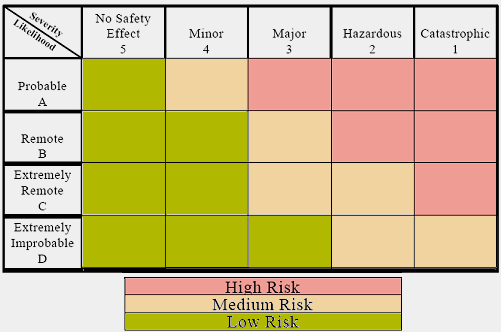The risk management concept emphasizes the identification of the change in risk with a change in alternative solutions. Safety Comparative Safety Assessment is made more complicated considering that a lesser safety risk may not be the optimum choice. Recognition of this is the keystone of safety risk management. These factors make system safety a decision making tool. It must be recognized, however, that selection of the greater safety risk alternative carries with it the responsibility of assuring inclusion of adequate warnings, personnel protective systems, and procedural controls.
Safety Comparative Safety Assessment is also a planning tool. It requires planning for the development of safety operating procedures and test programs to resolve uncertainty when safety risk cannot be completely controlled by design. It provides a control system to track and measure progress towards the resolution of uncertainty and to measure the reduction of safety risk. Assessment of risk is made by combining the severity of consequence with the likelihood of occurrence in a matrix.

| High Risk | --Unacceptable. Tracking in the FAA Hazard Tracking System is required until the risk is reduced and accepted. |
| Medium | -- Acceptable with review by the appropriate management authority. Tracking in the FAA Hazard Tracking System is required until the risk is accepted. |
| Low | -- Low risk is acceptable without review. No further tracking of the hazard is required. |
An example based on MIL-STD-882C is shown below. The matrix may be referred to as a Hazard Risk Index (HRI), a Risk Rating Factor (RRF), or other terminology, but in all cases, it is the criteria used by management to determine acceptability of risk.
The Comparative Safety Assessment Matrix below illustrates an acceptance criteria methodology. Region R1 on the matrix is an area of high risk and may be considered unacceptable by the managing authority. Region R2 may be acceptable with management review of controls and/or mitigations, and R3 may be acceptable with management review. R4 is a low risk region that is usually acceptable without review.

Early in a development phase, performance objectives may tend to overshadow efforts to reduce safety risk. This is because sometimes safety represents a constraint on a design. For this reason, safety risk reduction is often ignored or overlooked. In other cases, safety risk may be appraised, but not fully enough to serve as a significant input to the decision making process. As a result, the sudden identification of a significant safety risk, or the occurrence of an actual incident, late in the program can provide an overpowering impact on schedule, cost, and sometimes performance. To avoid this situation, methods to reduce safety risk must be applied commensurate with the task being performed in each program phase.
In the early development phase (investment analysis and the early part of solution implementation), the system safety activities are usually directed toward:
The culmination of this effort is the safety Comparative Safety Assessment that is a summary of the work done toward minimization of unresolved safety concerns and a calculated appraisal of the risk. Properly done, it allows intelligent management decisions concerning acceptability of the risk.
The general principles of safety risk management are:
Source: FAA Office of System Safety
Copyright ©2000-2015 Geigle Safety Group, Inc. All rights reserved. Federal copyright prohibits unauthorized reproduction by any means without permission. Students may reproduce materials for personal study. Disclaimer: This material is for training purposes only to inform the reader of occupational safety and health best practices and general compliance requirement and is not a substitute for provisions of the OSH Act of 1970 or any governmental regulatory agency. CertiSafety is a division of Geigle Safety Group, Inc., and is not connected or affiliated with the U.S. Department of Labor (DOL), or the Occupational Safety and Health Administration (OSHA).